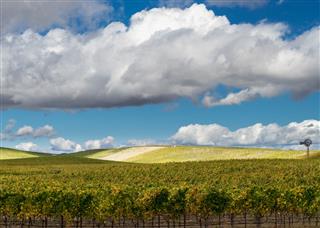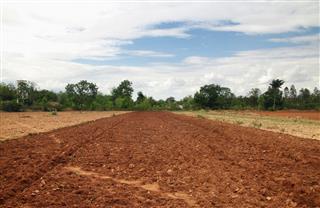
Plant growth is the process by which the plant grows in size. A matured plant has a strong stem and healthy leaves. The growth process is enhanced by the nutrients and the light energy that is used during photosynthesis. To get an overview of the plant growth process read on…
basic requirements
for plant growth
=
mineral-rich soils
+
water
+
adequate sunlight
For a seed to bear life, it must first fall to the ground and die. It is through the process of dying that the seed bears life and is transformed into a fresh new plant. How is this possible? Well, it is true that the seed has to first die and this happens only after the seed has matured on the parent plant. Mesmerizing ain’t it? Well, let’s see how the process of growth actually takes place.
Just like we humans need oxygen, food and water to foster our growth, plants too need nutrients to grow. Like human growth, plant growth also takes place primarily through the process of cell division.
Growth as we all know, is a process of irreversible increase in mass that results from cell division and cell expansion.
To aid the process of germination, a seed requires nutrient-rich soil, adequate sunlight, and sufficient water. Besides, favorable temperatures and moisture levels in the soil play an important role in aiding the process of plant growth.
Observe How The Plant Springs to Life

Dormant Stage

Ever noticed, how a fresh seed that is still green cannot bear life of its own? A fully developed seed is often dry and has a protective covering known as the testa. When such a seed falls to the ground and it gets sufficient water and the required temperature it begins to germinate.
Germination

The absorbed water nourishes the embryo of the seed which in turn aids the process of cell duplication. This causes the embryo to expand causing the embryonic plant to emerge from the seed.
In simpler terms, when a mature seed falls to the ground, it absorbs the moisture from the soil, which in turn propels the seed to decompose and eventually give way to a new plant. The moisture combined with right temperature aids the seed to absorb the nutrients from the soil which causes it to swell and eventually sprout.
Sprouting

Appearance of nodes is the first noticeable change in the germinating seed. These nodes puncture the outer covering of the seed to reveal the radicle or the primary root of the plant. The radicle acts as an anchor securing the seed in place, it also helps absorb the nutrients from the soil.

Once the seed is secured in place, the first shoot of the seed breaks forth from the soil. This is called the plumule, which is made up of one or more cotyledons. This forms the first leaves of the plant that shoots out from the ground towards the sunlight.
Vegetative State

As the roots begin to spread in the soil, the first leaves of the plant emerge out of the ground. These leaves or cotyledons absorb the sunlight which in turn initiates the process of photosynthesis. Due to this, the plant begins to grow rapidly. The plant develops its reproductive organs which is also known as the flowering stage. After the process of pollination is completed, the plant begins to produce fruits. These fruits contain seeds, which mature on the parent plant and fall to the ground thus starting its own life cycle.
To understand how a plant grows, you can try growing some mustard seeds/ wheat in a tray. Remember to sprinkle sufficient water on the soil to aid the process of germination. Observe how the seed sprouts to life in a few days. Besides, you can also experiment with bean sprouts and legumes, to study the process of plant growth.

